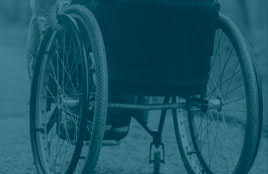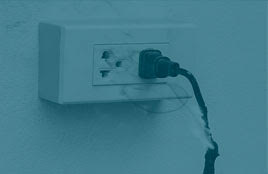I currently have three children attending different colleges in Pennsylvania, and being the intrusive, I mean involved, parent that I am, I’ve spent time walking around their campuses and the surrounding areas. I was struck by the consistent presence around all the campuses, of “Hookah Bars”.
Clueless, I asked what they were. The answer was vague, but the common denominator was that smoking hookah was ‘less harmful’ than cigarettes. My being the sort of person that will just not let things go—I mean, in the interest of science—I did a little investigation.
Hookah is not safer than smoking cigarettes. This is troubling—given the proximity of the hookah bars to college campuses, they are clearly marketing to the college age/younger crowd, who are on their own for the first time and making their own choices about their lifestyle and health—but they may be misinformed.
A survey done by the American Journal of Health Behavior, of 12th grade students in 2010, found that 17% of high school seniors in the United States had used hookahs in the past year. A study done in 2013 by the U.S. Department of Health, found that hookah smoking is growing more prevalent among university students in the United States, with past-year use ranging from 22% to 40%.
Hookah is a water pipe used to pass charcoal heated air through a tobacco mixture and ultimately through a water-filled chamber. The charcoal or burning embers are placed on top of perforated aluminum foil and the tobacco mixture is placed below. The user inhales the water-filtered smoke through a tube and mouthpiece. The hookah is used to smoke specially-made tobacco that is available in a variety of flavors—everything from mint or apple to cherry, chocolate, coconut and more. Hookah smoking is typically done in groups—thus the appeal to a group of young people—and sometimes with the same mouthpiece passed from person to person.
The tobacco is no less toxic in a hookah pipe, and the water in the hookah does not filter out the toxic ingredients in the tobacco smoke. Hookah smokers may actually inhale more tobacco smoke than cigarette smokers do because of the large volume of smoke they inhale in one smoking session, which can last as long as 60 minutes. A typical 1-hour-long hookah smoking session involves 200 puffs, while an average cigarette is 20 puffs. The volume of smoke inhaled during a typical hookah session is about 90,000 milliliters (ml), compared with 500–600 ml inhaled when smoking a cigarette.
Hookah smoke contains high levels of toxic compounds, including tar, carbon monoxide, heavy metals and cancer-causing chemicals. In fact, hookah smokers are exposed to more carbon monoxide and smoke than are cigarette smokers. Water pipe smoking delivers the addictive drug nicotine and is at least as toxic as cigarette smoke, and some users of hookah report being dependent on hookah and having difficulty quitting. Some argue, that smoking ‘Soax” an herbal mixture that does not contain nicotine is better. However, this does not alleviate the problems associated with the heat source for the hookah, charcoal.
The charcoal used to heat tobacco in the hookah increases health risks by producing high levels of carbon monoxide, metals, and cancer-causing chemicals. Even after it has passed through water, the smoke produced by a hookah contains high levels of toxic compounds, including carbon monoxide, heavy metals, and cancer-causing chemicals.
As with cigarette smoking, hookah smoking is linked to lung and oral cancers, heart disease, and other serious illnesses. Hookah smoking delivers about the same amount of nicotine as cigarette smoking, possibly leading to tobacco dependence. Hookah smoke poses dangers associated with secondhand smoke. Secondhand smoke from hookahs poses a serious risk for nonsmokers, particularly because it contains smoke not only from the tobacco but also from the heat source, the charcoal, used in the hookah. Hookah pipes used in hookah bars and cafes may not be cleaned properly, risking the spread of infectious diseases, such as tuberculosis, herpes, influenza, and hepatitis.
The increasing popularity of hookah smoking is in part driven by the social setting in which it occurs—in a group, among friends. The popularity is further increased among youth due to the flavors used in the tobacco mixtures and the misperception that it is safer and less irritating than cigarette smoking.
Surveys of youth and young adults reveal that this population believes they will experience fewer health effects from hookah smoking than from cigarette smoking. In a survey of attitudes among hookah smokers in Richmond and Memphis the majority of young smokers believed that their risk of addiction was less, and reported that they could quit at any time. Most reported that they felt that if they switched from cigarettes to hookahs it would reduce their health risks from tobacco.
The government regulates cigarettes. Now, where is the regulation of hookah bars? They are often exempted from the requirements that prohibit smoking in public places because they sell tobacco and are classified primarily as tobacco retail establishments. Some establishments qualify for exemptions because they do not serve alcohol on the premises. The definition of smoking can also be an impediment to effective regulation and enforcement, because water pipe smoking is not consistently defined as smoking across all states.
There are many groups—the American Lung Association for example – who are actively seeking to change state legislation to close loopholes that allow hookah bars to operate without the regulation usually applied to cigarettes.
So now, when you stroll past that hookah bar near your child’s college, and they try to tell you it’s ‘no big deal’, you can tell them—Hookah smoking is not safer than cigarette smoking.






